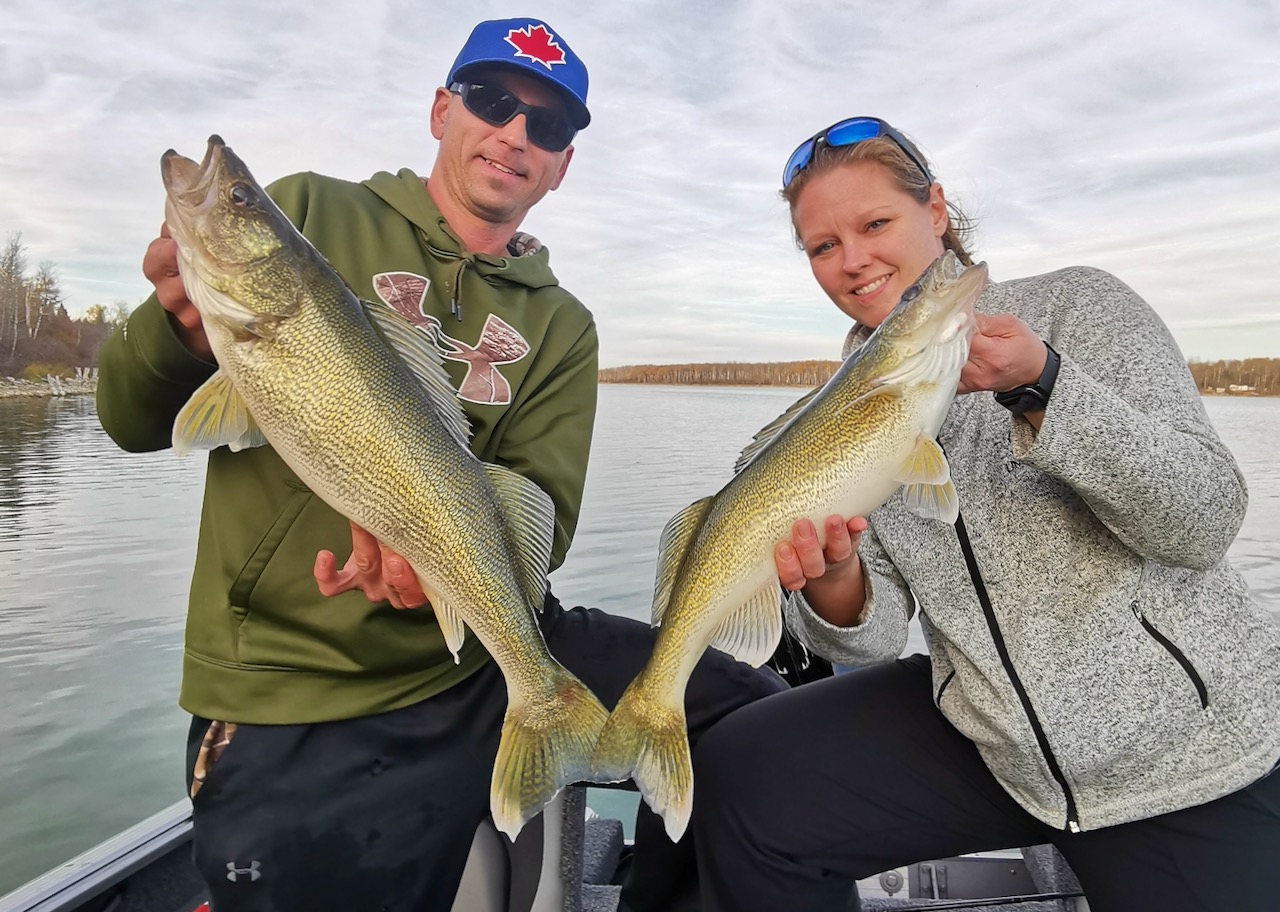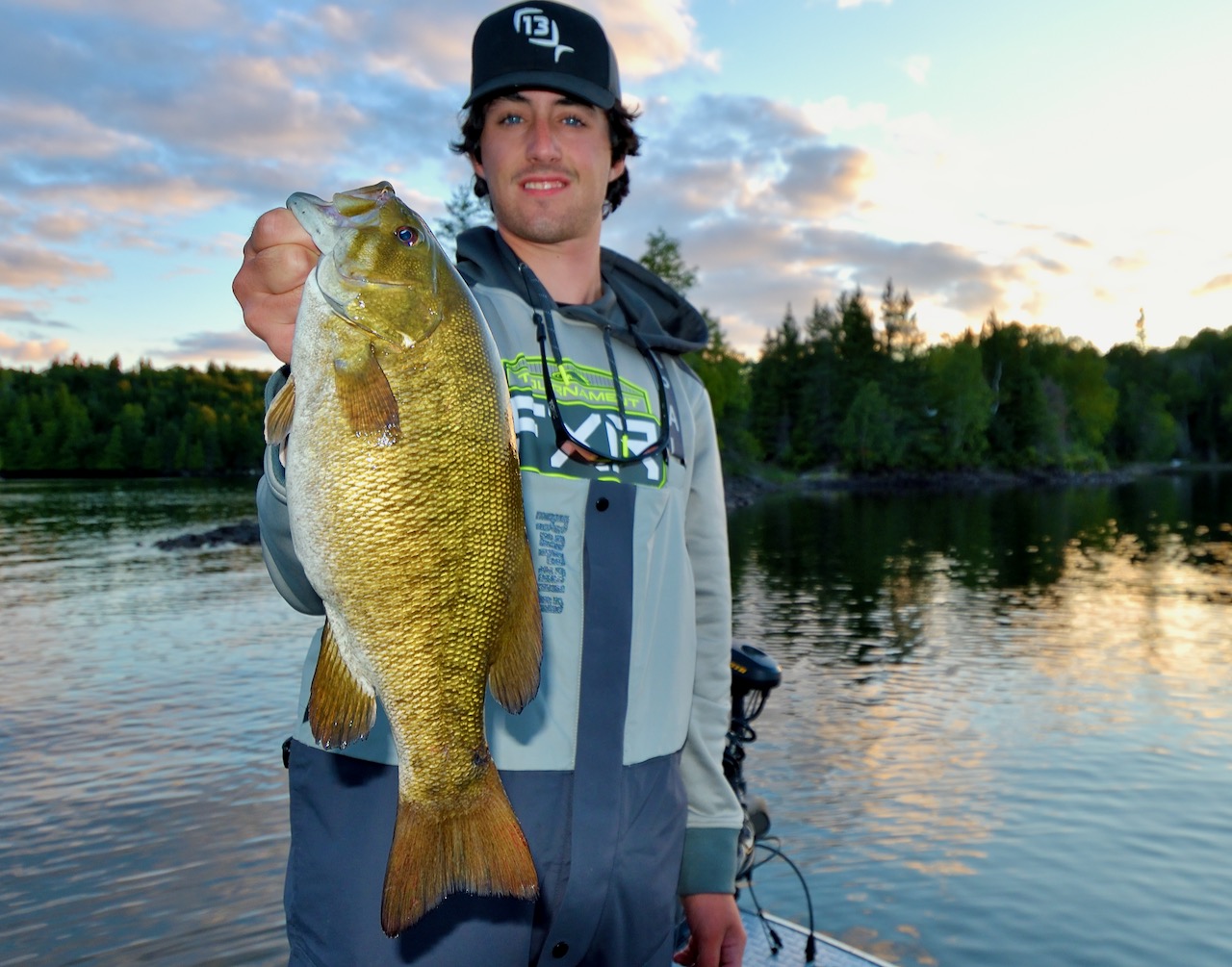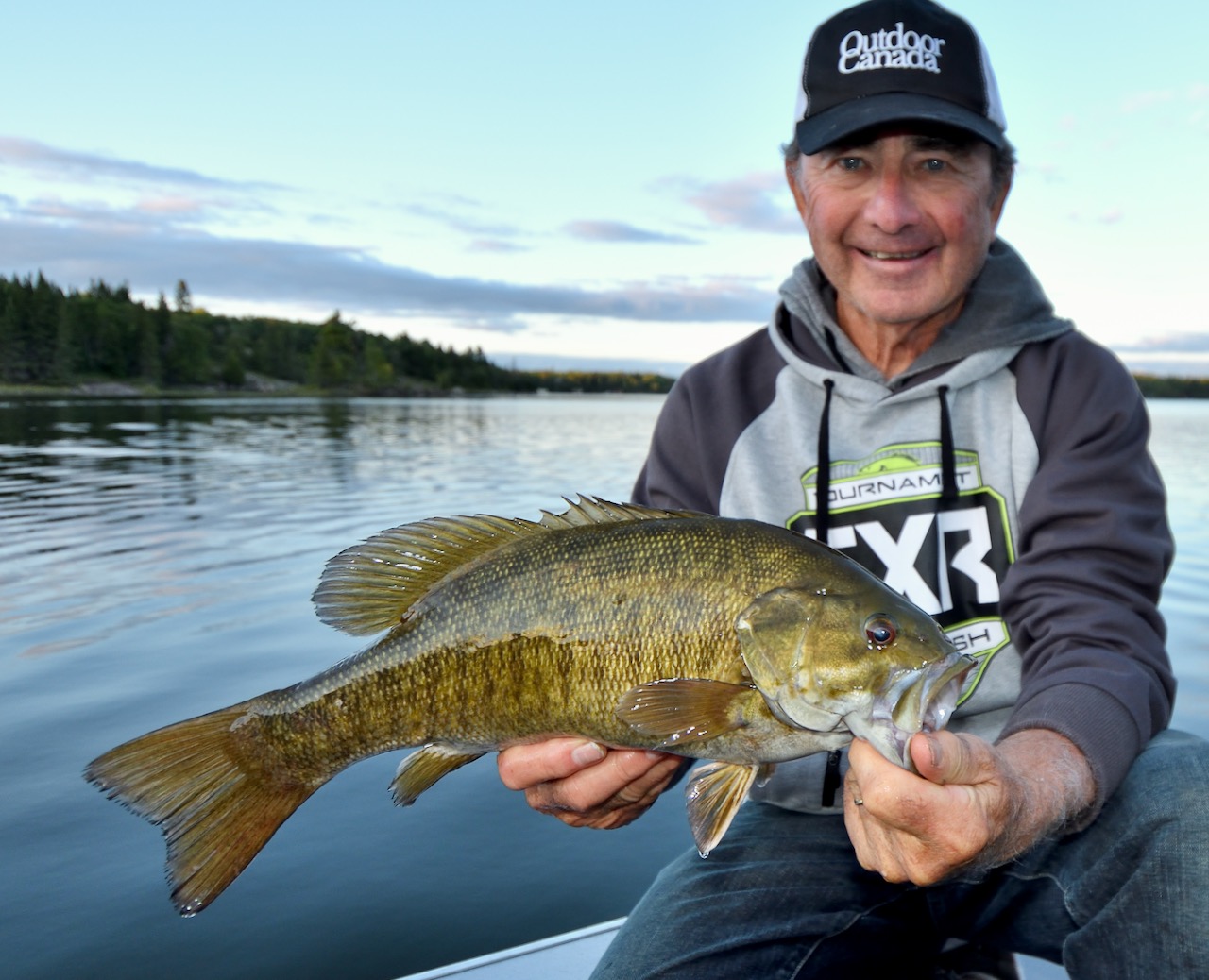FALL FISH FINDERS
How to find big end-of-season walleye, smallies, muskies and pike
Advertisement
SMALLMOUTH BASS
What has always fascinated me about late-fall smallmouth bass is that they behave almost identically to walleye when it comes to location—so much so, in fact, you’ll often find the two species together on the same structures. Typically, you’ll catch a plump golden walleye on one cast, then a bruiser bronzeback on the next. What’s really intriguing, though, is that you won’t find both walleye and bass together when it comes to the choicest late-fall locations.
Advertisement
Several years ago, for example, I hosted my good friend and In-Fisherman TV host Doug Stange to get footage for a late-fall bass episode. I took him to my favourite fall structure, where a 50-foot section of the rim breaks in 28 feet of water and plunges like a mountain slope into the basin; there are also a dozen or so basketball-sized boulders on the edge of the lip. I spot-locked our boat a cast’s length upwind of the sweet spot, then Doug and I proceeded to nab four-pound bass after four-pound bass. It was incredible.
Now, fast-forward one week and my buddy Bob Izumi was in town to shoot a late-fall Real Fishing show with me, casting heavily weighted swimbaits for trophy-sized walleye. I again spot-locked the boat in 28 feet of water, this time on a reef rim within sight of where Doug and I had blasted the bass seven days earlier. Bob later said it was one of the best big walleye days he’s ever enjoyed.
Advertisement
Smallmouth bass return to the same late-fall structures every yearThe fishing was so good that his brother, Wayne, who was operating the camera boat, picked up a rod and proceeded to pluck a half-dozen seven- to nine-pound walleye off the same rim. What’s so interesting is that I’ve never caught a bass on this spot, and I’ve never caught a walleye on the spot where I took Doug—even though these two choice locations are less than a half-kilometre apart, and they’re both structurally identical and plummet into the same basin.
I once quizzed my good friend and fisheries biologist Mark Ridgway about why this happens in the fall, and he confessed that it puzzles even the science community. He has donned scuba gear to visually inspect several such sites, and while they typically look identical to each other, only one out of a dozen or so will host bunches of fish; the others will be absent of life. It’s also worth noting that bass and walleye will faithfully congregate around these structures and rims every year in the late fall for their entire lives, generation after generation.
Advertisement



